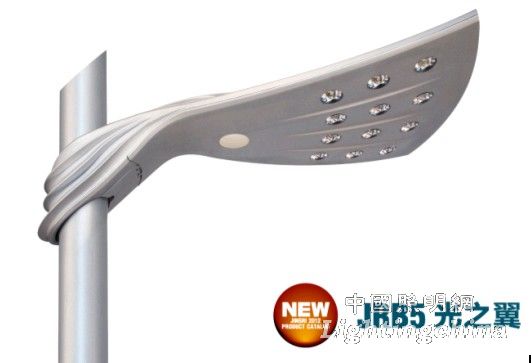1 Introduction
In the LED industry, there is Moore's Law in the microprocessor industry. That is, the price of LED will be 1/10 of the original every 10 years, and the performance will be increased by 20 times. With the rapid advancement of lighting technology, the LED industry has developed rapidly in recent years. At the same time, due to the green, environmentally friendly, energy-saving and efficient features of LED, it has also received strong support from the government.
The development trend of LED lighting is high technology, high added value, intelligent and modular. It can be seen that intelligent LED will become a major trend in the future of outdoor lighting products.
There are two connotations of intelligent lighting control: one is to achieve the purpose of energy saving and environmental protection, and the other is to provide a moderate light source according to people's needs. Only by combining lighting and intelligent technology can the lighting further meet the lighting needs of different individuals and different levels of groups to achieve on-demand lighting.
2 Control technology development
The core component of control technology is the microprocessor. In the past 20 years, the integration of microprocessors has been significantly improved, and the performance has been significantly improved while reducing power consumption. Microprocessors mainly include microcontrollers, DSPs, FPGAs, ARMs, etc.
MCU: After the 1990s, MCU technology has been greatly improved. The MCU gradually evolved from a single-chip microcomputer to a single-chip microcontroller, and in order to satisfy the maximum solution of the application system hanging on the chip, the MCU formed a SOC trend and extended to the single-chip application system stage. Different microcontrollers can meet different intelligent control requirements.
DSP: In the 1990s, DSP has been widely used in data communication, mass storage, voice processing, video processing, etc. With the development of technology, DSP began to integrate with FPGA, high-end CPU, DSP into the high-end CPU branch prediction and dynamic buffer technology. , greatly improve the performance, and the DSP core is integrated into the FPGA, which greatly improves the signal processing speed and enables it to support multiple large data streams. DSP's high operating speed and powerful data processing capabilities enable a large amount of digital information to be processed in a short period of time. This is not possible with the microcontroller.
FPGA: FPGA is a digital system core chip after the processor and DSP. In these 24 years, FPGA technology has undergone revolutionary changes from chip to chip and complexity, making it more flexible and parallel. The FPGA integrates various soft and hard IP cores internally, which is more conducive to SOC design. Application of FPGA EDA tools can design up to hundreds of thousands of gates and two levels of logic design, complex procedures can not be done manually.
ARM: ARM is the core component of the embedded system under the RISC structure. It is widely used in various fields such as control and wireless communication. The development of ARM can improve the intelligence, control and human-computer interaction capabilities of the object system. With more than 500 ARM partner alliances, it offers a wide range of designs and solutions.
In addition to the core microcontrollers, LED lighting control technology combines sensor technology, intelligent control technology, network technology, multimedia technology and other technologies. With the development of the Internet of Things, Internet of Things technology is gradually being applied to outdoor lighting.
Applying intelligent control technology to outdoor lighting has the following advantages:
1) Extend the life of the light source
2) Fully automatic dimming, saving energy during operation
3) Make full use of the light source
4) Consistency of illumination
5) Artistic and flexible to meet individualized, layered lighting
6) Achieve light-environment-human interaction and develop into a smart city
Intelligent lighting is an important means of making lighting further green and sustainable. In the future, smart lighting will be the mainstream trend of LED lighting.
3 How to apply lighting products
The implementation of LED lighting is aimed at energy saving. It is very meaningful to realize further energy saving by using control technology based on LED as outdoor lighting.
Most of the traditional infrared sensing technology is used for indoor lighting. It is judged by detecting the temperature of the human body, and many outdoor objects have temperatures close to the human body in summer. Moreover, the detection transmission distance is very close, and the farthest distance is also in the range of 3 meters, so application for outdoor lighting is not desirable. This function can be achieved by studying experiments using microwaves in the natural light spectrum. Microwave refers to electromagnetic waves with a frequency of 300MHz-300GHz. It is an abbreviation for a limited frequency band in radio waves, that is, electromagnetic waves with a wavelength between 1m (excluding 1m) and 1mm, which are decimeter waves, centimeter waves, and millimeter waves. And the sub-millimeter wave
